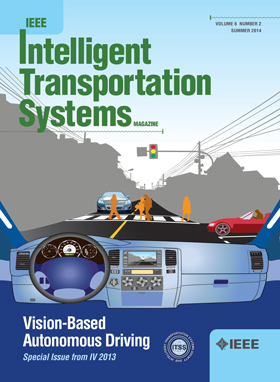MorFormer: Morphology-Aware Transformer for Generalized Pavement Crack Segmentation
IF 8.4
1区 工程技术
Q1 ENGINEERING, CIVIL
IEEE Transactions on Intelligent Transportation Systems
Pub Date : 2025-04-21
DOI:10.1109/TITS.2025.3558782
引用次数: 0
Abstract
Cracks are common on pavements. Accurate crack detection plays a vital role in pavement maintenance. However, cracks have rich and varied morphological features and fine edges, making this task challenging. Additionally, noise factors such as stains, scratches, and complex textures in the pavement background can easily be confused with cracks, increasing the risk of false prediction in the segmentation process. Therefore, we propose Background Morphology Learning (BML) to reconstruct morphological features of the pavement background noise, extract background morphological dissimilarity maps to suppress interference and reduce false alarms. In addition, we propose Crack Morphology-aware Attention (CMA), which adaptively learns the morphological shape of cracks and dynamically adjusts the shape of the attention receptive field to the topological features of the cracks. This significantly improves the completeness of segmentation. Our method mitigates the problems of false alarms and incomplete segmentation results in the crack segmentation task. Therefore, we propose a Morphology-Aware Transformer (MorFormer) that achieves state-of-the-art results on five public datasets. Moreover, we propose a large-scale cross-domain benchmark for crack segmentation, where MorFormer exhibits excellent domain generalization.MorFormer:用于路面裂缝分割的形态感知变压器
人行道上常有裂缝。准确的裂缝检测在路面养护中起着至关重要的作用。然而,裂纹具有丰富多样的形态特征和精细的边缘,使这项任务具有挑战性。此外,路面背景中的污渍、划痕和复杂纹理等噪声因素很容易与裂缝混淆,从而增加了分割过程中错误预测的风险。为此,我们提出了背景形态学学习(BML)来重建路面背景噪声的形态特征,提取背景形态学不相似图来抑制干扰,减少误报。此外,我们提出了裂纹形态感知注意(CMA),它可以自适应地学习裂纹的形态形状,并根据裂纹的拓扑特征动态调整注意接受场的形状。这大大提高了分割的完整性。我们的方法减轻了裂纹分割任务中的误报和分割不完整的问题。因此,我们提出了一种形态感知变压器(MorFormer),它可以在五个公共数据集上实现最先进的结果。此外,我们提出了一种大规模的跨域裂缝分割基准,其中MorFormer具有出色的域泛化能力。
本文章由计算机程序翻译,如有差异,请以英文原文为准。
求助全文
约1分钟内获得全文
求助全文
来源期刊

IEEE Transactions on Intelligent Transportation Systems
工程技术-工程:电子与电气
CiteScore
14.80
自引率
12.90%
发文量
1872
审稿时长
7.5 months
期刊介绍:
The theoretical, experimental and operational aspects of electrical and electronics engineering and information technologies as applied to Intelligent Transportation Systems (ITS). Intelligent Transportation Systems are defined as those systems utilizing synergistic technologies and systems engineering concepts to develop and improve transportation systems of all kinds. The scope of this interdisciplinary activity includes the promotion, consolidation and coordination of ITS technical activities among IEEE entities, and providing a focus for cooperative activities, both internally and externally.
 求助内容:
求助内容: 应助结果提醒方式:
应助结果提醒方式:


